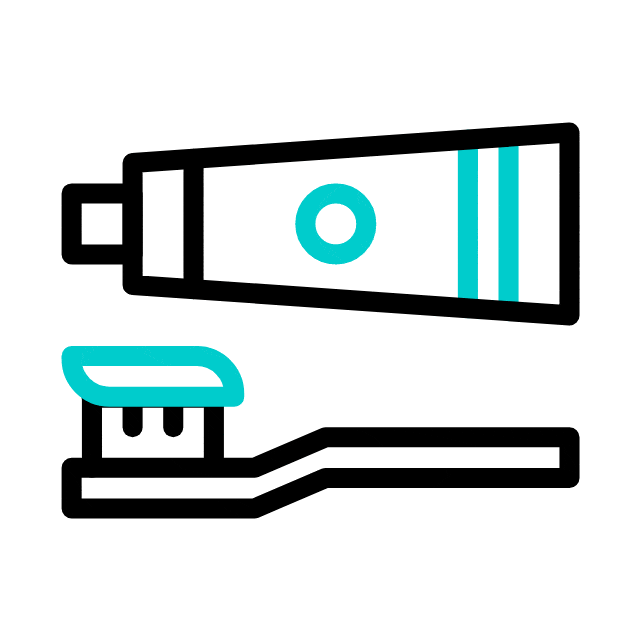Frenectomies
A frenulum is a small fold of tissue that connects two structures in the mouth. There are two main frenulums of concern: the lingual frenulum, which connects the underside of the tongue to the floor of the mouth, and the labial frenulum, which connects the upper or lower lip to the gums.
When these frenulums are excessively tight or restrictive, they can lead to various oral health issues. For example:

Tongue-Tie
When the lingual frenulum is too short or tight, it can restrict the movement of the tongue. This condition, known as tongue-tie or ankyloglossia, can affect speech, feeding and oral hygiene.

LIP-TIE
A restrictive labial frenulum can result in a condition called lip-tie, where the movement and flexibility of the upper or lower lip are limited. Lip-tie can affect latching during breastfeeding and the alignment of teeth.
Frenectomies are simple surgical procedures performed to release or remove the restrictive frenulum. The goal of a frenectomy is to restore normal function and promote healthy oral development. At Anna Kids Dentistry, our experienced dental professionals are skilled in performing frenectomies using safe and precise techniques.
The frenectomy procedure involves the following steps:
Evaluation & Diagnosis
Our dental team will carefully examine your child’s oral cavity and assess the condition of the frenulum. We will consider their symptoms, oral function, and overall oral health to determine if a frenectomy is necessary.
Anesthesia
Before the procedure, we will ensure your child’s comfort by applying a local anesthetic to numb the area being treated. This will prevent any discomfort or pain during the frenectomy.
Frenulum Release
Using specialized instruments, our dentist will carefully release or remove the restrictive frenulum. The procedure is quick and typically well-tolerated by children.
Post-Procedure Care
After the frenectomy, we will provide you with detailed post-operative instructions to ensure proper healing. This may include recommendations for pain management, oral hygiene practices and follow-up visits to monitor progress.
The need for anesthesia during a frenectomy procedure can vary depending on several factors, such as the individual’s pain tolerance, the extent of the procedure and the preference of the healthcare professional performing the procedure. In many cases, local anesthesia is used to numb the area and minimize discomfort during a frenectomy. However, it’s best to consult with a dental or medical professional who can evaluate your specific situation and determine the most appropriate approach.
Frenectomies can have a significant positive impact on your child’s oral health and overall well-being. By addressing restrictive frenulums, we aim to improve their ability to speak, eat, and maintain good oral hygiene habits.
At Anna Kids Dentistry, we understand the importance of creating a comfortable and child-friendly environment. Our team is experienced in working with children and strives to make the frenectomy procedure as gentle and stress-free as possible.
If you have concerns about your child’s frenulum or suspect they may benefit from a frenectomy, we encourage you to schedule a consultation with our pediatric dental specialists. We will provide a comprehensive evaluation and develop a personalized treatment plan to meet your child’s unique needs.
Choose Anna Kids Dentistry for specialized pediatric dental care that addresses oral health concerns like restrictive frenulums. Contact us today to schedule an appointment and discover the difference we can make in your child’s oral health journey.
OTHER SERVICES
CLEANING & PREVENTION

Cleaning & Exams

Fluoride Treatments

Sealants


